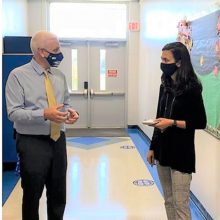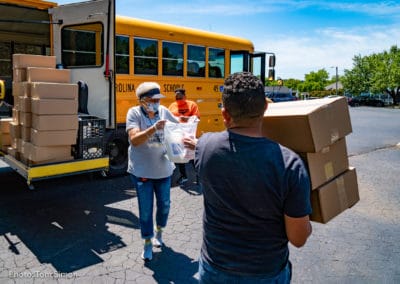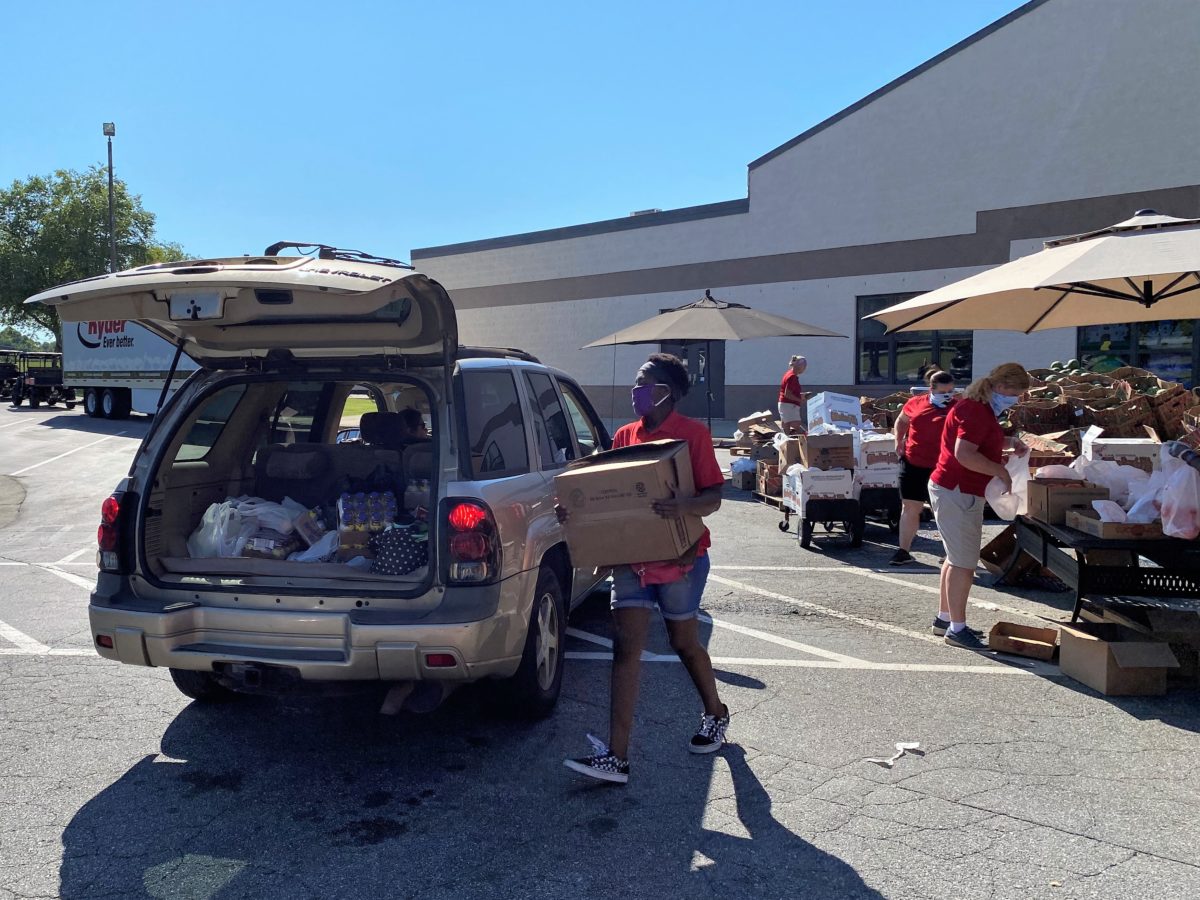

It’s 8:30 a.m. on a Monday morning in late July, and the heat index is already creeping near 90 degrees in Thomasville, North Carolina. A line of cars wraps around Thomasville Primary School as parents wait to receive a week’s worth of meals for their children through the Thomasville City Schools summer meals program. Teams of staff and volunteers in red T-shirts and masks greet families and load food into their open car trunks.
At the entrée station, Brenda Watford, school nutrition director for Thomasville City Schools, is busy prepping large bags of frozen chicken for the next car. Watford has been with the district for 26 years. Her husband says she eats, sleeps, and breathes this place, which is accurate — she recently worked an 82-hour week. Even after she retires, Watford plans to continue volunteering in a school cafeteria.
Watford loves her job, but the challenges and uncertainty of COVID-19 have brought her many sleepless nights over how to feed every child in her community.
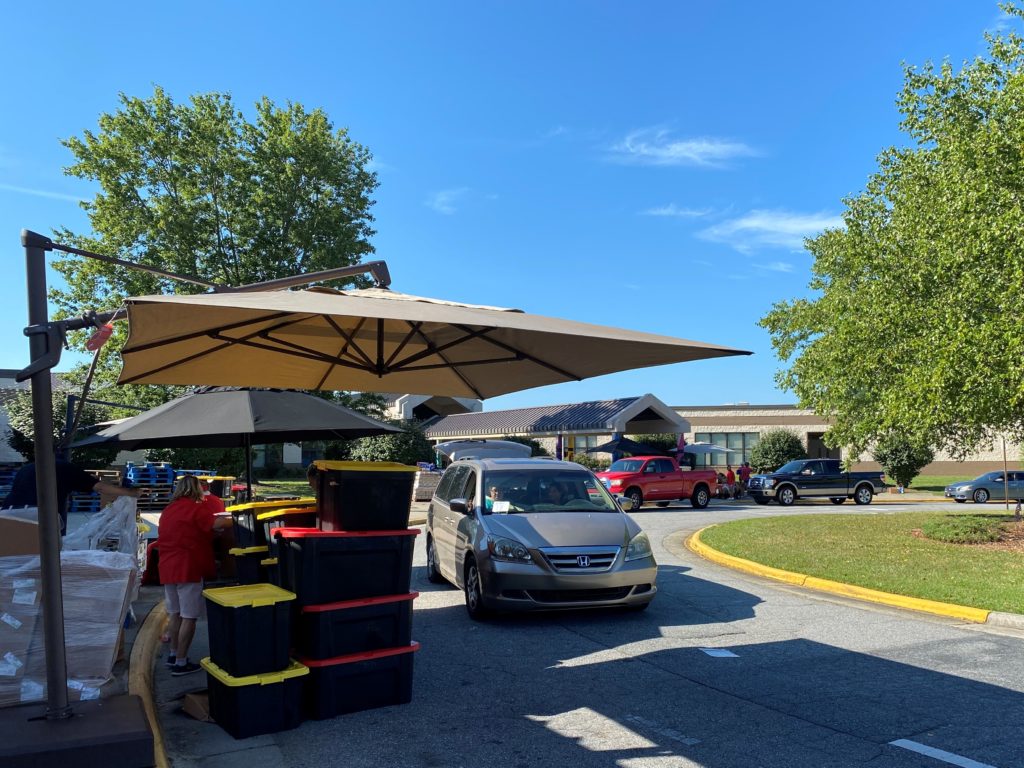

The mechanics of a drive-thru summer meals site
When school buildings first closed in mid-March, Watford and her team decided to deliver meals via yellow school buses. Families called and asked why they had been skipped due to confusion with the exact bus routes.
So the district pivoted and used vans to distribute meals to specific sites — something they had done in previous summers. Again, families were confused because they thought the vans would come door-to-door, but they didn’t. Watford’s phone rang off the hook with families wondering how to get food.
“I literally didn’t eat for six days because my nerves got so bad,” she said.
Something had to change. Watford decided to begin a weekly meal distribution site at Thomasville Primary.
The site currently operates every Monday from 8 a.m. to 4 p.m. — but on the day I visited, cars had been lined up since 5 a.m. In that case, they start serving early so that families don’t have to wait as long. Watford recalled one Monday when they served more than 100 families between 6 a.m. and 8 a.m.
“Some of them sit up there two and a half hours to wait on food. If you’re going to sit two and a half hours to wait on food, you’re hungry,” said Watford.
Each car puts a card in the windshield that indicates how many children are in the household. That tells the nutrition staff how many meals to load into their trunk. Many of the items are bagged in bulk, allowing staff to easily load a weeks-worth of food for every child.

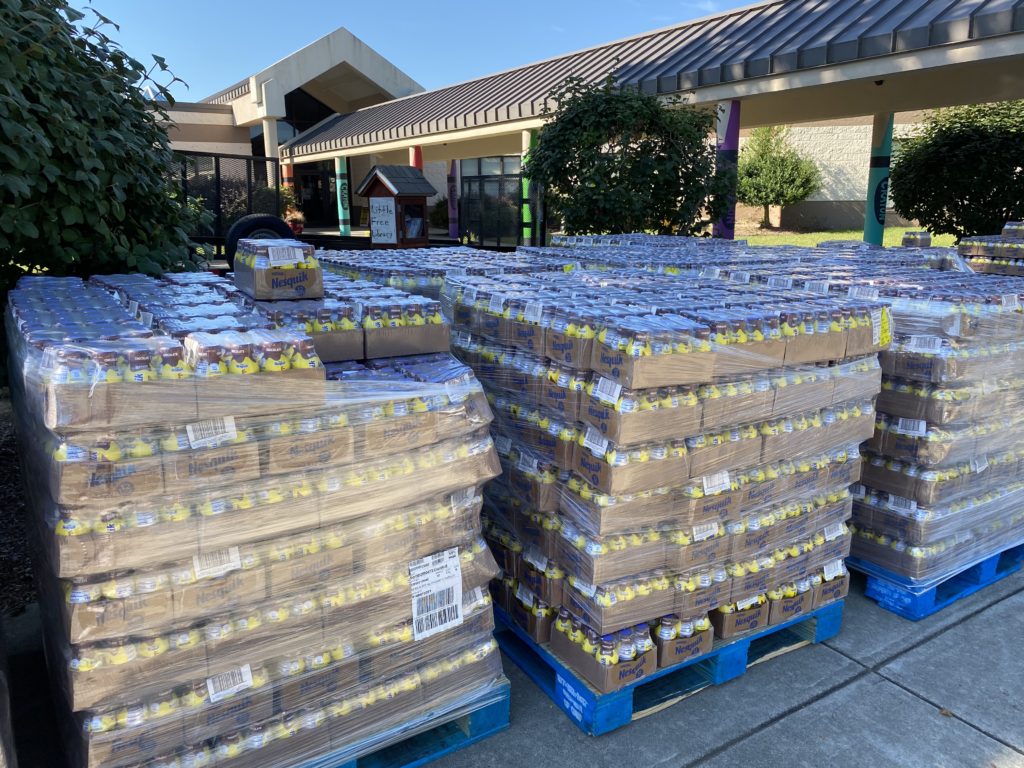
Pallets of chocolate milk for Thomsaville City Schools’ summer meals program. Analisa Sorrells/EducationNC 
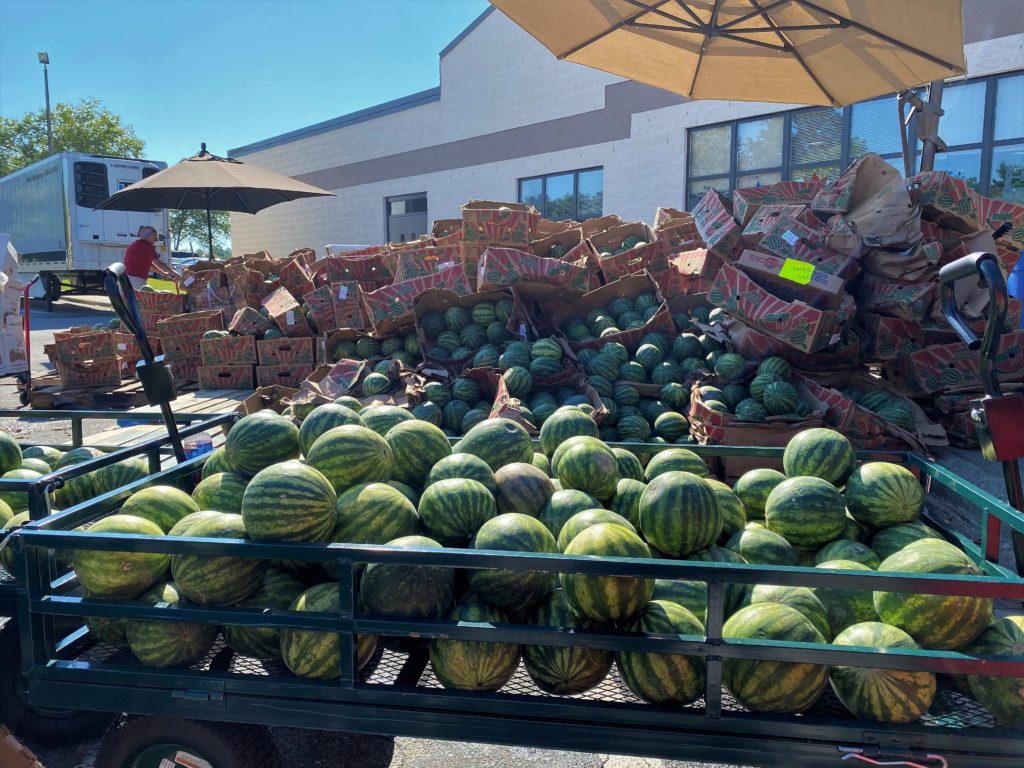
A wheelbarrow of mini watermelons to be handed out at Thomasville Primary. Analisa Sorrells/EducationNC
Cars pull slowly around the parking lot of the school, stopping at stations along the way. First, pallets of milk are loaded into their trunk. Then comes the entrée station, which includes items like pizzas and chicken filet sandwiches. Next is the breakfast station, where shelf-stable products like danishes and cereals are loaded.
At the grains station, cars receive items like pasta, rice, and hamburger buns depending on what meals are being offered. Finally, cars stop at a fresh fruits and vegetables station. On this particular day, piles of mini watermelons, pallets of bananas, and bags of tomatoes and cucumbers were handed out.
All of this functions like a well-oiled machine as teams of nutrition staff and volunteers move the line along at a steady pace. Through car windows, staff greet each family and children reach out to help load food into their cars.
Meals are only distributed on Monday, but it’s a process that takes a full week to prepare. Every Wednesday and Thursday, vendors deliver new food supplies to the school. Frozen items are loaded into two rented transfer trucks, and other items like fruits, vegetables, and breakfast cereals are pre-bagged for distribution. So much food is being delivered each week that the cafeteria at Thomasville Primary had to be certified as a warehouse.
More than 2.6 million meals have been served since the program began. Feeding children is what makes it worth the long days and restless nights for Watford. She sees children’s eyes widen at the sight of fresh pineapples. She hears from parents who say they would not have food in their house if it wasn’t for the program.
“They’ll call me and they’ll say, you know, ‘We really didn’t know where supper was coming from tonight,’” said Watford. “When I think of it, I just, I could cry.”


‘I’m going to feed anybody that’s got children’
The demand for meals at Thomasville Primary has been unprecedented. Thomasville City Schools is a small, four-school district with roughly 2,300 students. But on a recent Monday, Thomasville Primary served almost 11,500 children — five times the district’s enrollment. Every child receives 19 free meals: seven breakfasts, seven lunches, and five suppers. That’s roughly 218,000 meals distributed in a single day.
This is made possible by the flexibilities granted under the Summer Food Service Program (SFSP) — a federally-funded, state-administered program that provides reimbursements from the U.S. Department of Agriculture (USDA) for any free meal served to a child age 18 and under. Thomasville City Schools has been operating under the program since April.
Because Thomasville Primary is offering an “open” summer meals site, children don’t have to be enrolled in the district or meet any requirements to receive the meals. And, federal waivers from the USDA have made the program even more flexible amid the COVID-19 pandemic. For example, parents can pick up meals without children present, multiple meals can be offered at one time, and meals can be served in non-congregate settings (i.e. drive-thru or grab-and-go).
Watford’s guess is that the additional children being served are coming from surrounding communities. Thomasville City Schools is just one of three districts in Davidson County. The district is also serving younger siblings of students — children under age 5 who aren’t enrolled in the school district yet but are still eligible for meals under the program.
“We have people coming from everywhere because a lot of school systems … had to stop because they’re out of money,” said Watford. “I’ve had to explain to people why we can’t just feed Thomasville children. … There’s no way I would just say, ‘Thomasville, come on down.’ I’m going to feed anybody that’s got children.”

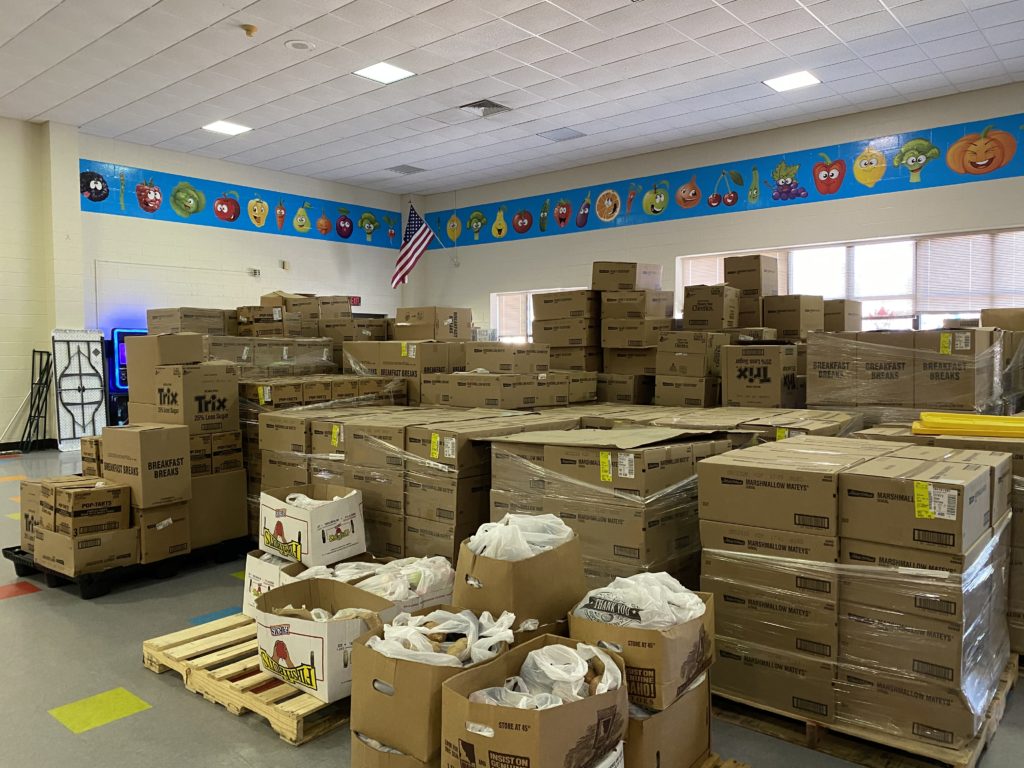
The cafeteria of Thomsaville Primary, which has been classified as a warehouse. Analisa Sorrells/EducationNC 

The cafeteria at Thomasville Primary School. Analisa Sorrells/EducationNC
Expiring waiver
On August 31, a federal waiver from the USDA that allows the Summer Food Service Program to operate is set to expire. That would force Thomasville City Schools to revert back to serving meals under the National School Lunch Program (NSLP) and School Breakfast Program (SBP), which have more restrictions than the SFSP.
Under those programs, Thomasville Primary would no longer be able to serve every child that comes through the drive-thru line. Instead, they would have to confirm which children are enrolled in the district. Those who are not enrolled in the district — including recent graduates, young children who are not yet in kindergarten, and children from other communities — would not be eligible for the meals.
Thomsaville City Schools is a Community Eligibility Provision (CEP) district, which means all enrolled students would still receive free meals. However, in non-CEP districts, students receiving meals under the NSLP or SBP would have to be checked for eligibility for free, reduced-price, or paid meals, and payments would have to be collected.
Watford lost a whole night of sleep when she first found out that a waiver extension for the SFSP wasn’t approved yet.
“We’re going to hand that second grader their meals that they’re not going to have in school, and there’s those other two little children with their eyeballs looking at me. I cannot do that,” said Watford. “Could you hand out food to some and not hand it out to others?”
On July 10, the School Nutrition Association sent a letter to Secretary of Agriculture Sonny Perdue asking that the USDA allow school meal programs to continue serving students through the SFSP and to extend all SFSP COVID-19 waivers through the end of the 2020-21 school year.
The letter states that requiring schools to operate under the National School Lunch Program and School Breakfast Program, rather than the SFSP, “greatly complicates meal service, raising the risk of COVID-19 exposure during meal distribution, and increasing costs and waste for school meal programs while reducing federal reimbursements for meals served.”
On July 29, 36 U.S. Senators wrote a letter to Perdue in support of the School Nutrition Association’s request to extend the waivers. And on July 30, House Committee on Education and Labor Chairman Robert C. “Bobby” Scott, VA-03, introduced the Pandemic Child Hunger Prevention Act. Among other things, the legislation would allow the SFSP to continue through the 2020-21 school year and all students would be eligible for free school meals under the NSLP and SBP. The legislation has been endorsed by numerous organizations including the School Superintendents Association, the School Nutrition Association, the American Academy of Pediatrics, and the Food Research and Action Center.
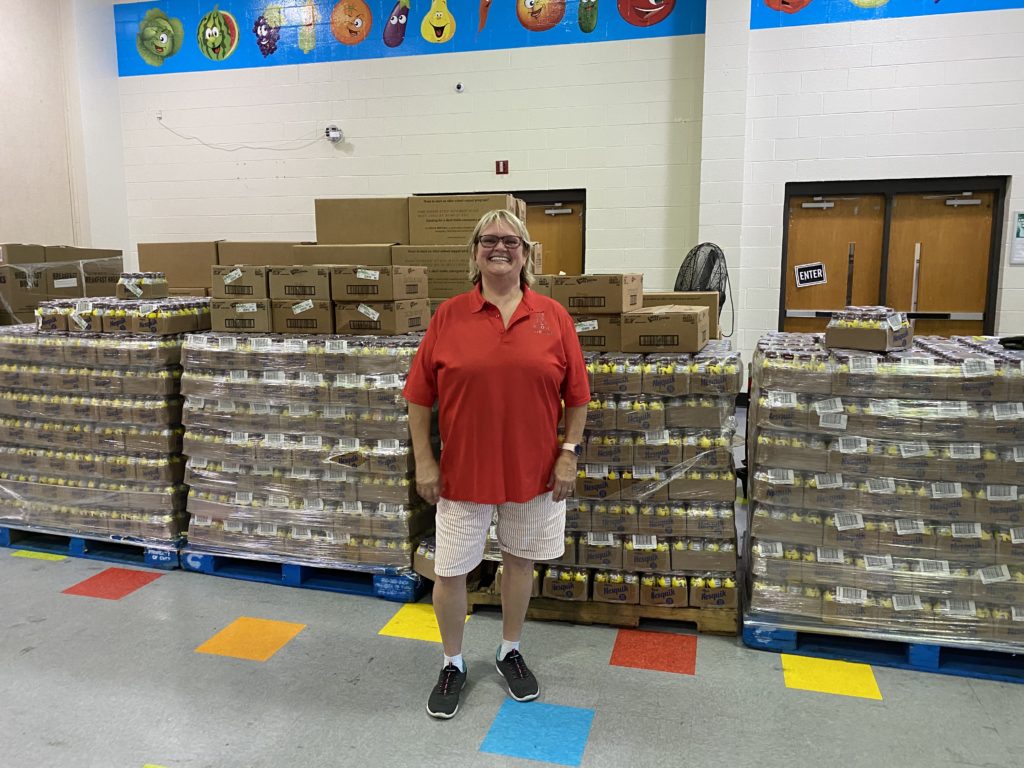

An uncertain future
Watford is a servant-leader. When umbrellas used to shade staff and volunteers were damaged in a storm, she spent a day at The Home Depot, maxing out her personal charge card to buy new ones. When we first met, she was working alongside other staff and volunteers, bagging up items until she could find time to step away and speak with me. And when I asked her what advice she’d give to other districts hoping to do similar work, she praised the efforts of her staff for making it all possible.
At her core, Watford cares about feeding others. She eats half of her meal at restaurants so that she can give the other half to someone in need. And she wants the ability to continue feeding every child that comes through the drive-thru line at Thomasville Primary.
The thought of handing one student food and not being able to hand it to their younger siblings brings her to tears. If the Summer Food Service Program isn’t extended, Watford is clear about her plans: She would retire.
“I have three good years left in me. But if the government tells us we’ve just got to feed certain children, me as a Christian number one, but my heart can’t do it,” said Watford. “I cannot do it.”
